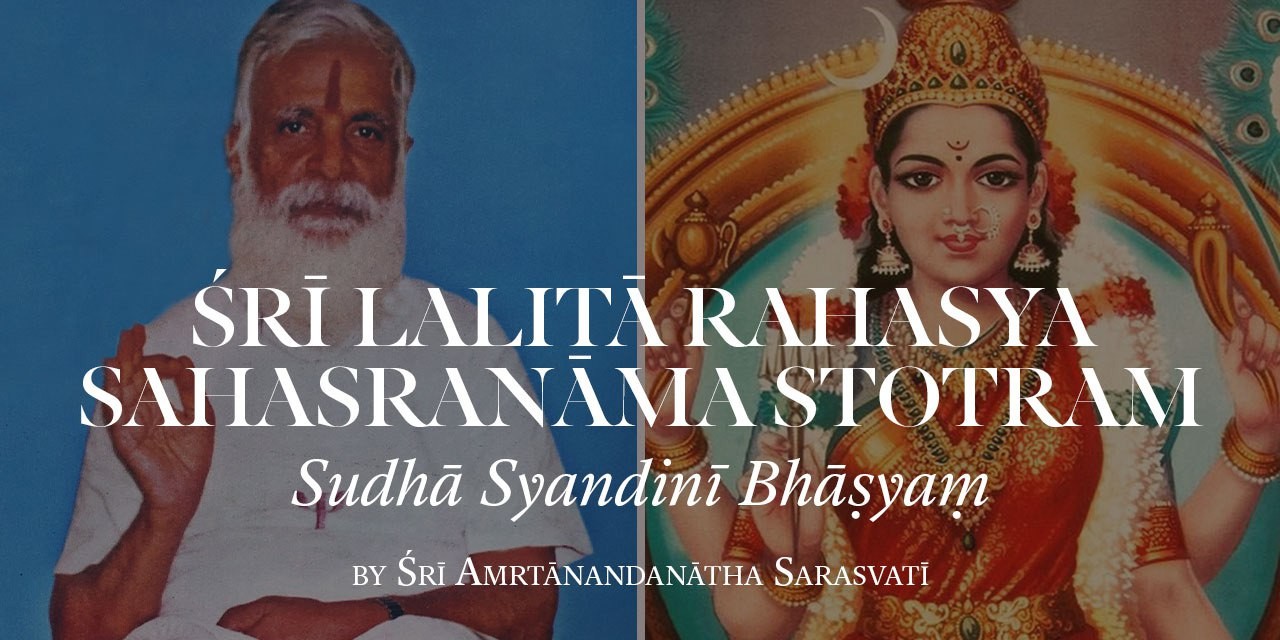
103, 104. Ājñācakrāntarālasthā & Rudragranthivibhedinī
Residing in the space of Ājñā cakra, Devi cuts open the Rudragranthi.
The Rudragranthi means the knot of Rudra. It means the sense of identification with an individual life. There is a notion that having transcended the Viṣṇugranthi, there is nothing left. Life, however, continues because every atom, every part of space has life. The notion that if one loses one's individual life there is going to be not even this prāṇa, is called the Rudragranthi.
One must lose the interest even in the continuance of one's individual life, in order to cross the barriers of Rudragranthi. The Devi acting as Kālī at the Ājñā centre, acts as the Guru merging the individual into the cosmic being. When the knot of Rudra opens, it is said that one has attained kapalabhedanam. That is the opening of the skull.
There are two processes of death:
One process is where one is afraid of death, is subject to re-birth and where the life goes out through the anus.
The other mode of death is that which is obtained by concentrating the powers of will and taking them out through the root of Sahasrāra, with a smile on the lips and the person in ?Jnayoga?.
There have been many cases in India where people adept in yoga just sat, closed their eyes and went into Samādhi. In such process, usually a light is seen emanating from the skull and going away by those who are fortunate enough to be nearby. These are the characteristic differences between a normal death leading to unconsciousness to death, and the siddhi which attains super-consciousness and death.
Source: Śrī Amṛtānandanātha Sarasvatī "Sudhā Syandinī Bhāṣyaṃ" Typed Manuscript
(an incomplete commentary on Lalitā Sahasranāma)
